While the start of summer was more spring than spring was, we should now be seeing the benefits of a wet 2013 and a hot East Australia Current running down the east coast.
The main focus for fly fishers is on the grasshopper. Streams have had plenty of rainfall to keep them at good levels, and with dry conditions and dry grass along the best streams, there will be masses of ‘hoppers plopping onto the water.
In the north few can go past streams like the North Esk, South Esk and St Pats, although if some of the smaller creeks surrounded by pasture can be accessed then the fishing should be good.
While many streams are down on numbers due to the cormorant plague of 2012/13, the fish that do remain are quite fat. The best flies are those that make a nice plop when they hit the water and stay floating. Apart from that some casual resemblance to a grasshopper is good. Fish them along the shallow banks and anywhere near over hanging grass.
Down south the grasshopper is still the prime focus, but on streams where the ‘hoppers are absent stick with the generic flies such as the Royal Wulff and Elk Hair Caddis. The Tyenna is the nymphing equivalent to the MCG, and many anglers have already found that this stream has more than recovered the ground lost to cormorants.
Caddis hatches will be still evident on most fast-water streams of an evening, although not usually in the numbers encountered in spring. Small mayflies are also small in numbers during the heat of summer, but with only a month until things cool down a bit there isn’t long to wait.
The meadow streams of the Macquarie and Brumbies Creek are always as you find them. Flows can be a little frustrating depending upon the amount of water coming down from Poatina or on irrigation, but anything above low flow will be fine.
The weirs at Brumbies are a very popular destination at this time of year with the hot tip to fish this water early of a morning with a different plan when the wind gets up. The sea breeze often makes things a bit testy after lunchtime, and any forecast for a ripping westerly should mean a different plan.
Lure fishers often struggle during the peak of summer; however tackling the streams at daybreak is the best bet for action. Small hardbodied lures and soft plastics are the best shot. As the day gets warmer the tendency is for trout to start following lures rather than taking them, which can be very frustrating
Lowland still waters are best now left until March, especially Four Springs, which becomes too hard to fish due to weed. I am reliably informed that the weed normally reduces significantly later in March, which is something to keep in the memory bank.
Even deep water like Huntsman Lake will be hit by the dreaded ‘dog days’ of summer. The best bet will be to drive another 45 minutes and fish Great Lake.
Southern waters like Meadow Bank haven’t really covered themselves in glory recently, and southern anglers looking for good trout fishing should keep heading up the Lyell Highway to higher altitude waters.
Great Lake is simply wonderful this season. Bright days are best for the fly fisher, particularly with a good wind from the northwest to northeast. This leads to the fabled ‘shark’ fishing, where brown and rainbow trout feed high in the waves and become very easy to see when spotting from a boat. It can get rough out there, so small boats are not an option.
Trollers do very well on Great Lake, especially early of a morning and then as the sunsets. Mostly they do well fishing deep around areas like Kangaroo Rocks, McLanaghan Island, Becketts Bay and the area off Elizabeth Bay.
I like to fish the shores on foot on bright days, as the polaroiding can be the equal if not better than the experience of the nearby Nineteen Lagoons. There are far more trout in Great Lake than there will ever be in the popular waters of lakes Like Botsford, there are less people (mostly none) and they can be seen cruising across the substrate quite easily.
Arthurs is pretty much back to where we would hope – reasonable hatches, plenty of fish looking up and fun for everyone. The water level is slowly receding, more due to evaporation than anything else and as far as I’m concerned, this is a good thing.
All throughout February, fish will be found close to shore and around stands of dead timber. These fish are looking to feed on anything, and well-presented generic dry flies will always accumulate a good number of fish over the day.
If looking for hatches on a cloudy day then head to Cow Paddock Bay, Hydro Bay, Creely Bay or Tumble Down, as these areas offer the best chance of a good dun hatch. There are of course plenty of other areas on the lake, which are good, but not with the consistency of the afore-mentioned locations.
Early morning wind lanes are fantastic on Arthurs at this time of year, especially in Hydro Bay and on the Morass. Mostly these fish in the wind lanes are looking for midges, but true to form for Arthurs Lake the trout are quite willing to take pretty much anything.
This is the time of year when we see a lot of anglers in the Nineteen Lagoons trying to capture that wilderness experience of this amazing place. It is counter intuitive therefore when we see up to 15 anglers fishing one small lagoon!
Many highland locals call this the ‘silly season’, as the Nineteen Lagoons will be ‘chockers’ with anglers, yet walk for 30 minutes past Talinah Lagoon and the place is deserted, yet with some wonderful fishing available.
Water levels should be dropping come February – this country really depends upon consistent rainfall – a wet spring and early summer doesn’t translate into high summer levels.
Trout here are accustomed to this though, but bear in mind that long drawn out fights with fish in the heat of the day will make it hard to successfully release fish, especially big ones.
Bright days will see plenty of people out here for the poloroiding, but don’t cross out the cloudy days – the fish still feed and some of the most intense mayfly hatches you will ever see are in the western lakes.
The north of the state is dominated by two significant estuaries – the Tamar River and Port Sorell.
The Tamar is something of an enigma – this massive water promises much, but to a great extent leaves many anglers aching for more. Such is the expanse of this river that I doubt if anyone truly becomes a master of it.
Having said that, there is a massive array of prime species that are targeted during summer, such as King George whiting and snapper.
Big whiting have been caught around the mouth of the river for the past few seasons, with most taken around Lagoon Beach at Low Head. Local tackle store Damon Sherriff’s Sport ‘n’ Fish is the best place to get local knowledge on where to chase these great fish. Whiting have been caught consistently to 60cm with plenty around 45-50cm.
Snapper are also getting on the agenda, and if this summer sees a continuation of the past few seasons, this year we should see a further spread of fish throughout the river.
Last summer there were fish taken from Pipe Clay bay Right up to Little Swan Point, however it seems the bulk of fish are taken in the area from Shag Rock up to Spring Bay on the southern side of the Batman Bridge.
While I basically know nothing about catching snapper, those who do indicate that slack water is the best time to maximise your chances, use very fresh bait and use your sounder to find concentrations of fish.
Yellowtail kingfish are also a major target at the heads of the Tamar, and some locals have perfected techniques to catch these fish. Quite often they will be feeding on small squid around the Farewell Beacons, although it is easy to become distracted by the schools of Australian salmon busting up around the area.
This is a very popular area in summer, but unfortunately for anglers, most of this popularity is from water skiers.
From the National Park ramp to the sea there are always plenty of Australian salmon to be had, and upstream from here the biggest bream in Tasmania are always the target for skilled lure casters.
Offshore the flathead can be good, but experiment with depth as the better ones are often out deeper.
Mako sharks are always at the top of the agenda for the north west boys, especially with an offshore breeze. Mako sharks started coming to the berley in late December, and by February this behaviour is well entrenched.
In closer to shore it is Australian salmon and flathead which will occupy most anglers attention, however increasing numbers of anglers out of Burnie are looking for pinkie snapper. Good numbers of small snapper have been a regular catch for keen anglers and that means the bigger ones aren’t far away.
Kelly ‘Hooch ‘Hunt of Team PENN says in his regular despatch that February is a great time off Somerset for very large Australian salmon, with the odd yellowtail kingfish as a welcome by-catch. Calamari are everywhere on the coast too, and Kelly recommends that the mako shark fishing should be awesome, especially when the arrow squid finally show up.
The main action here is all offshore, especially when the warm current gets here. Water temperatures on the shelf can get as high as 20º, and when it does just about every game fish you can think off will be down.
The bread and butter species are albacore and striped tuna, with a regular show of yellowfin tuna. The yellowfin get here they are often quite big, with plenty of 80kg fish that will test any angler.
Along with the striped tuna are the much-lauded striped marlin, which hang around the striped tuna, mainly because they like to feed on them! St Helens is the main spot from which to base, however Bicheno is a great location as well. The good thing about St Helens is when the weather is ordinary or too windy then the bay is a great fall back.
Georges Bay is an amazing fishery. Home to some brilliant flats-style bream fishing, Georges Bay also has huge amounts of Australian salmon and tailor as well as plenty of King George whiting for those prepared to modify their approach and technique.
Early of a morning is a great time to chase the salmon in the bay before the sea breeze gets up – for the smaller salmon look for birds hunting the bait schools. The bigger salmon tend not to show like the smaller 500g-1kg models, so look in places like Moulting Bay and the shallow water on either side of the bay.
The silver trevally are as big here as you will find anywhere in Tasmania (or South East Australia for that matter). They are generally found in the channel as you head towards the barway. Fish deep with soft plastics that must be right on the bottom for success. The Zerek Shrimp with a heavier than normal jighead has done well here in early summer, but curl tail grubs rigged on heavier heads to get to the bottom will always do well.
Bream addicts flock to the east coast for the amazing fishing at places like Scamander and Ansons Bay. These two places offer some fantastic fishing in February, with shallow water presentations the best at this time of year. Hardbodied lures are the best shot, and surface lures are always reliable as well.
While the peak of summer is upon us, most action down south centres on the Derwent, especially for bream anglers. Upstream of the Tasman Bridge and on pretty much any shore according to conditions will see bream feeding in water less than 1m. Favourite spots include the bays around Cadburies, the shores between The Derwent Entertainment Centre and Mona as well as the ultra-reliable Bedlam Walls and Cornelian Bay.
Now that bream have well and truly finished their spawning duties we will see plenty of fat bream spread throughout the system, so any likely shore will more often than not produce the goods.
Downstream from Hobart will see many anglers looking for yellowtail kingfish, of which plenty were caught at this time last year around Betsy Island.
Reads: 3069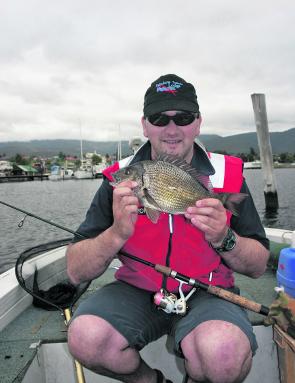
Craig Templar with a solid Derwent River bream taken on one of his unique fly-jigs.
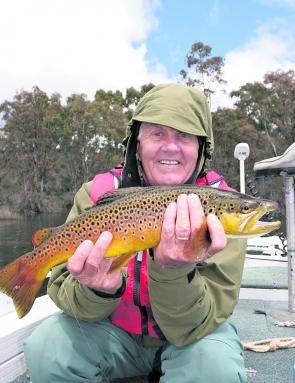
Roger Armstrong with an example of just how good the trout can be in Arthurs Lake when the level is high.
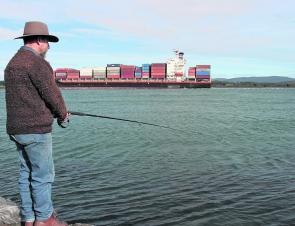
Ian Gooch fishes the Tamar in search of zebra fish.
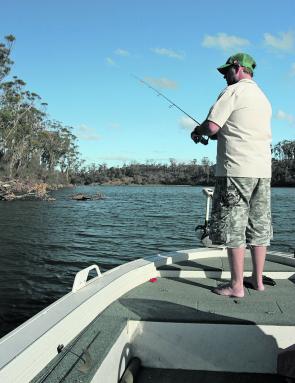
Brendan ‘Beevor’ Turriff gets his mojo on as he casts for bream in the Scamander River.
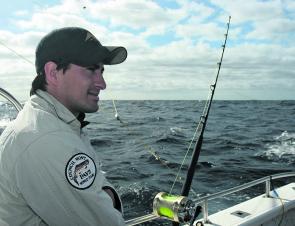
Yapper Howell waits patiently for the reel to start screaming off St Helens on the Binalong Patch.

Beevor Turriff has some light line fun with striped tuna on Merricks Reef off St Helens.
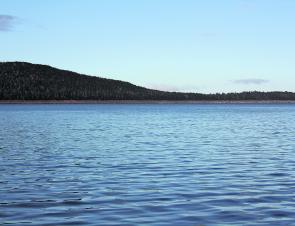
Calm early morning water on Great Lake – time to look for midge feeding trout.

Match the hatch no matter where you are – here the bait is matched by a Presso Minnow.




